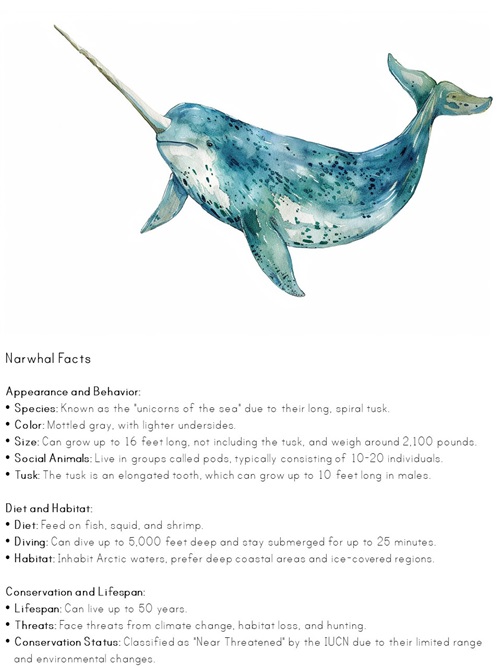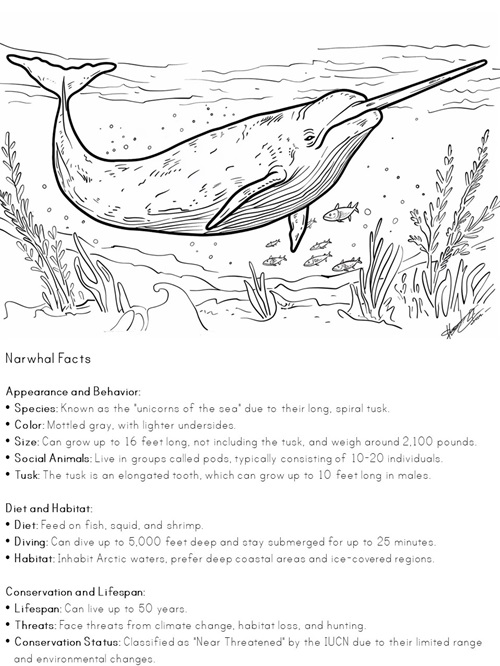KidZone Animals
Whales: Narwhals

"Narwhals breach," by Glenn Williams; used with permission under Public Domain
Narwhals or Delphinapterus leucas are part of the family Monodontidae. The only other whale a part of this family is the Beluga. They exist within the subspecies Odontoceti (toothed whales). The Narwhal whale is a large-sized, toothed whale, that most commonly is found in the arctic North.
For obvious reasons, the Narwhal is often referred to as the 'unicorn of the sea,' as it is most known for its large front tusk. Though the "one-tusk-wonder" is often how we think of these beautiful creatures, some male narwhals actually have two tusks coming out the front of their bodies. A narwhal’s horn isn’t really a horn at all. It’s actually an overgrown tooth!
Narwhals are usually white with black spots and sometimes stripes. Their tail flukes (tail fins) are extremely curved, allowing for quick turns in the water; at the same time, however, they can swim steadily in the water thanks to their powerful tail!
Narwhals do not have dorsal fins and can easily travel around (and under) the Arctic ice. Again, their tusks are often used to break ice in order to come up for breath when they breach the surface.
A narwhal's major predator is actually the Orca! Because orcas generally travel through warmer waters in large pods, the narwhal sticks to the cold Arctic waters.
Like the beluga whale, the narwhal's neck is very flexible due its jointed (not fused) neck vertabrae. This, among other things, allows the narwhal to easily turn for agility and flexibility in the water! Similarities with the beluga whale have resulted in studies that examine the relationship between these two species of whale. And guess what? They have been recently discovered to have a very close relationship in the water (awww).
As mentioned above, the narwhal is actually considered a large, toothed whale. Males are larger than females (as is common with most toothed whales). They weigh approximately 3,600 pounds, and measure in at a length of 5 meters. The females, however, usually weigh 2,000 pounds, and are 4 meters in length.
One tidbit of information is that narwhals, like other toothed whales (odontocetes), communicate through the water by clicking or whistling. This is done for reasons of hunting, mating, or general location communication.
Key Points:
- Family: Narwhals are part of the family Monodontidae, along with Beluga whales.
- Suborder: They belong to the suborder Odontoceti (toothed whales).
- Habitat: Commonly found in the Arctic North.
- Physical Characteristics: Known for their large tusk (overgrown tooth), gray color with black spots, curved tail flukes, and lack of dorsal fin.
- Size: Males weigh around 3,600 pounds (1,600 kilograms) and measure about 5 meters (16 feet). Females weigh around 2,000 pounds (900 kilograms) and measure about 4 meters (13 feet).
- Behavior: Use their tusks to break ice, have flexible necks, and communicate through clicks and whistles.
Narwhal facts coloring pages and posters

